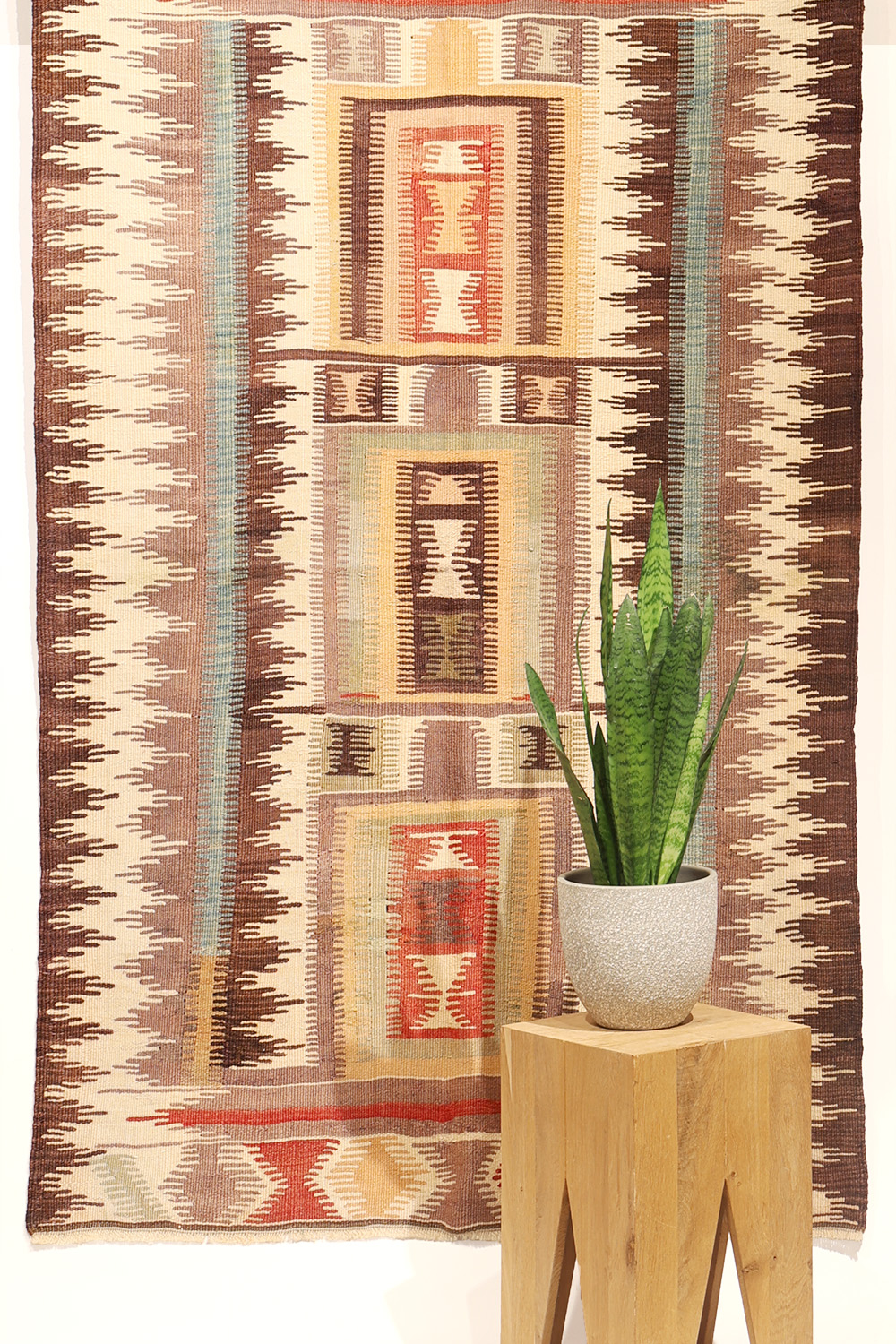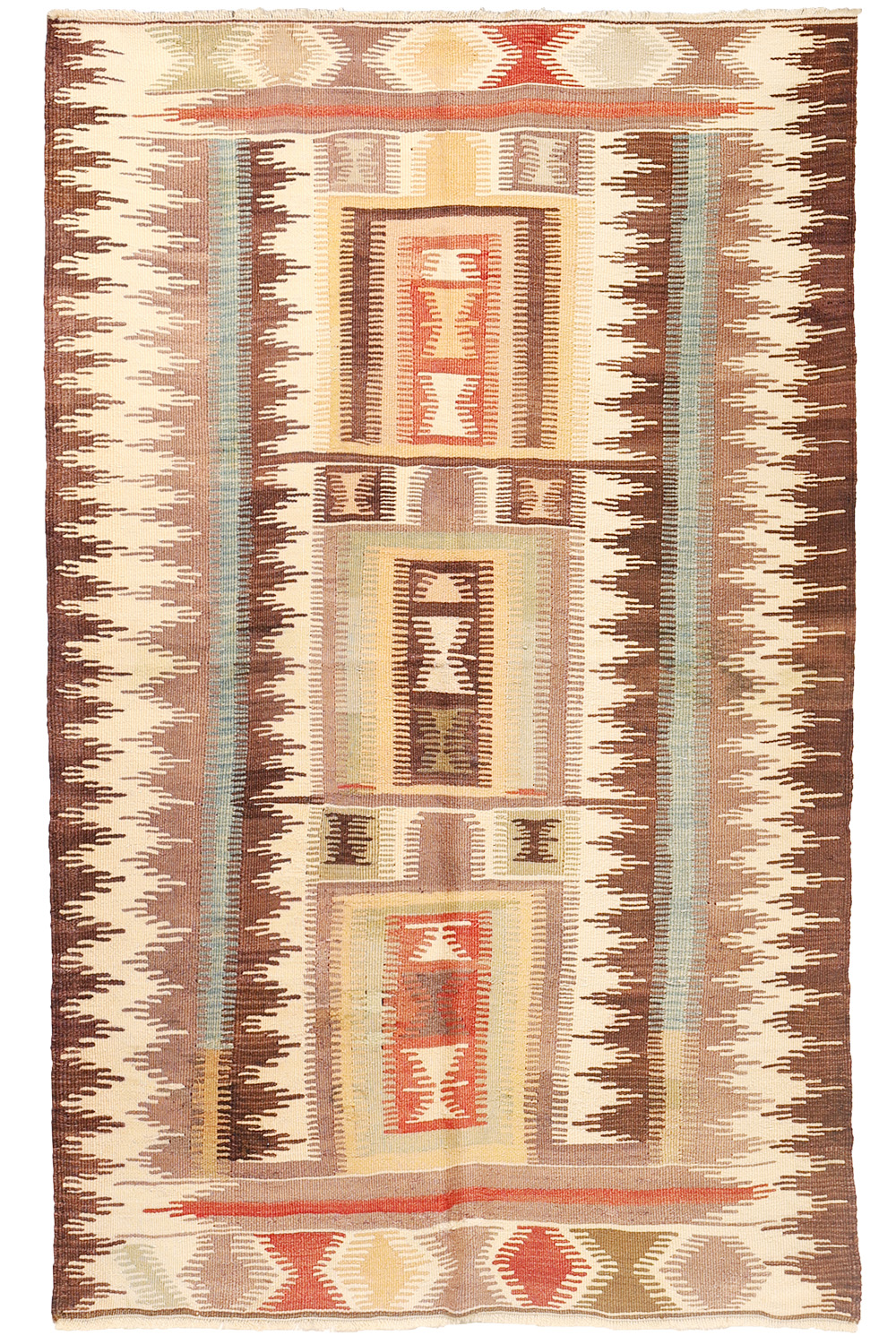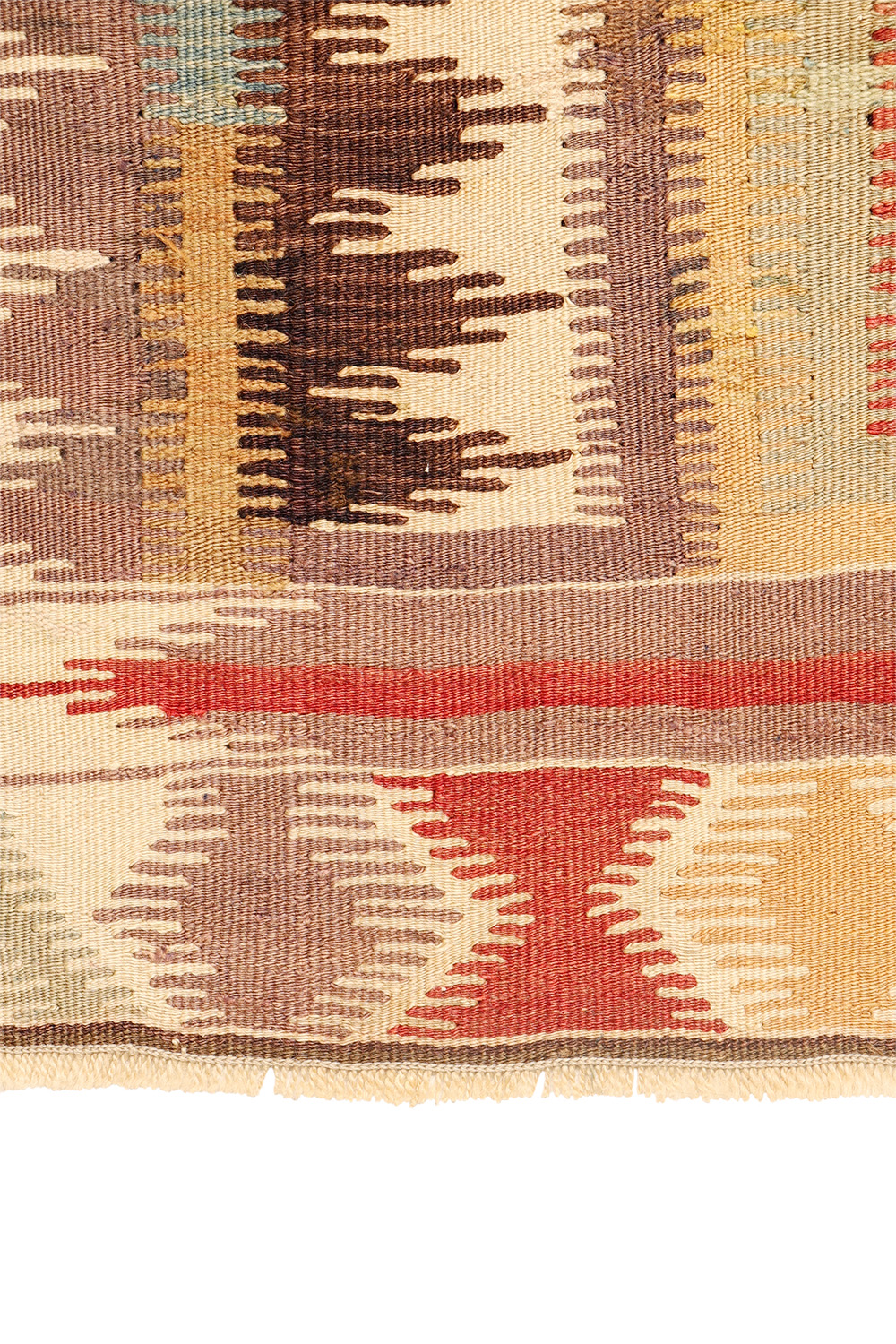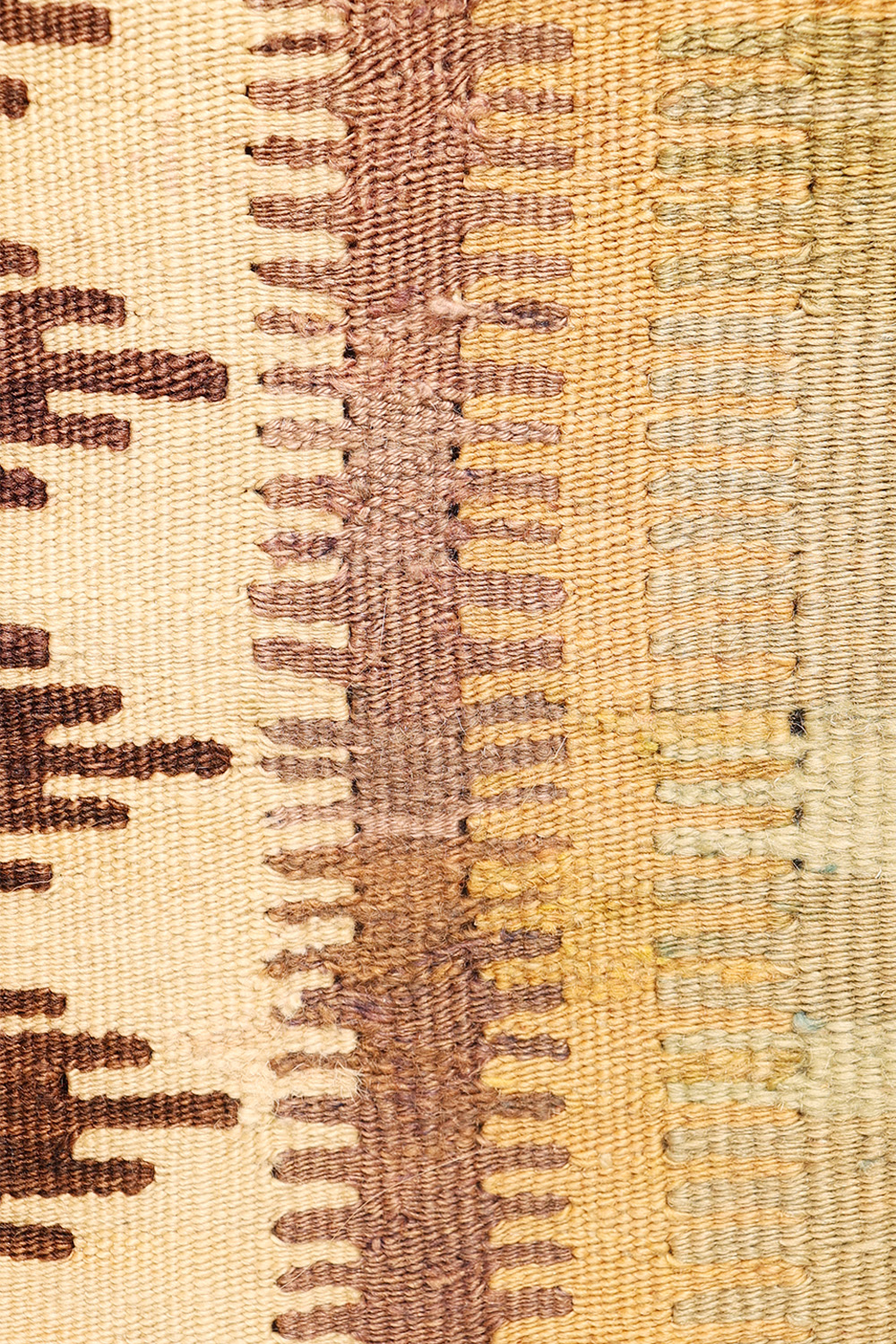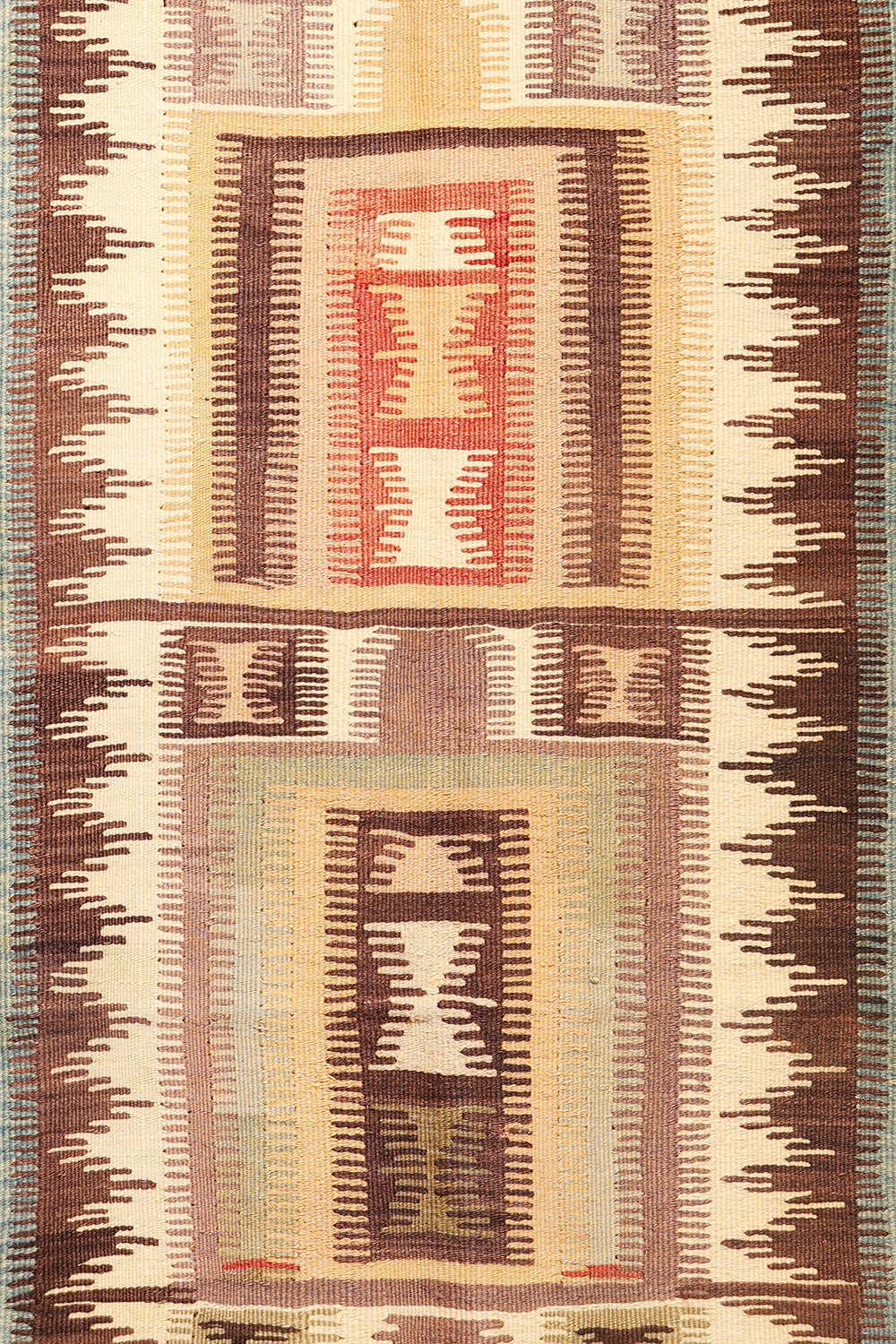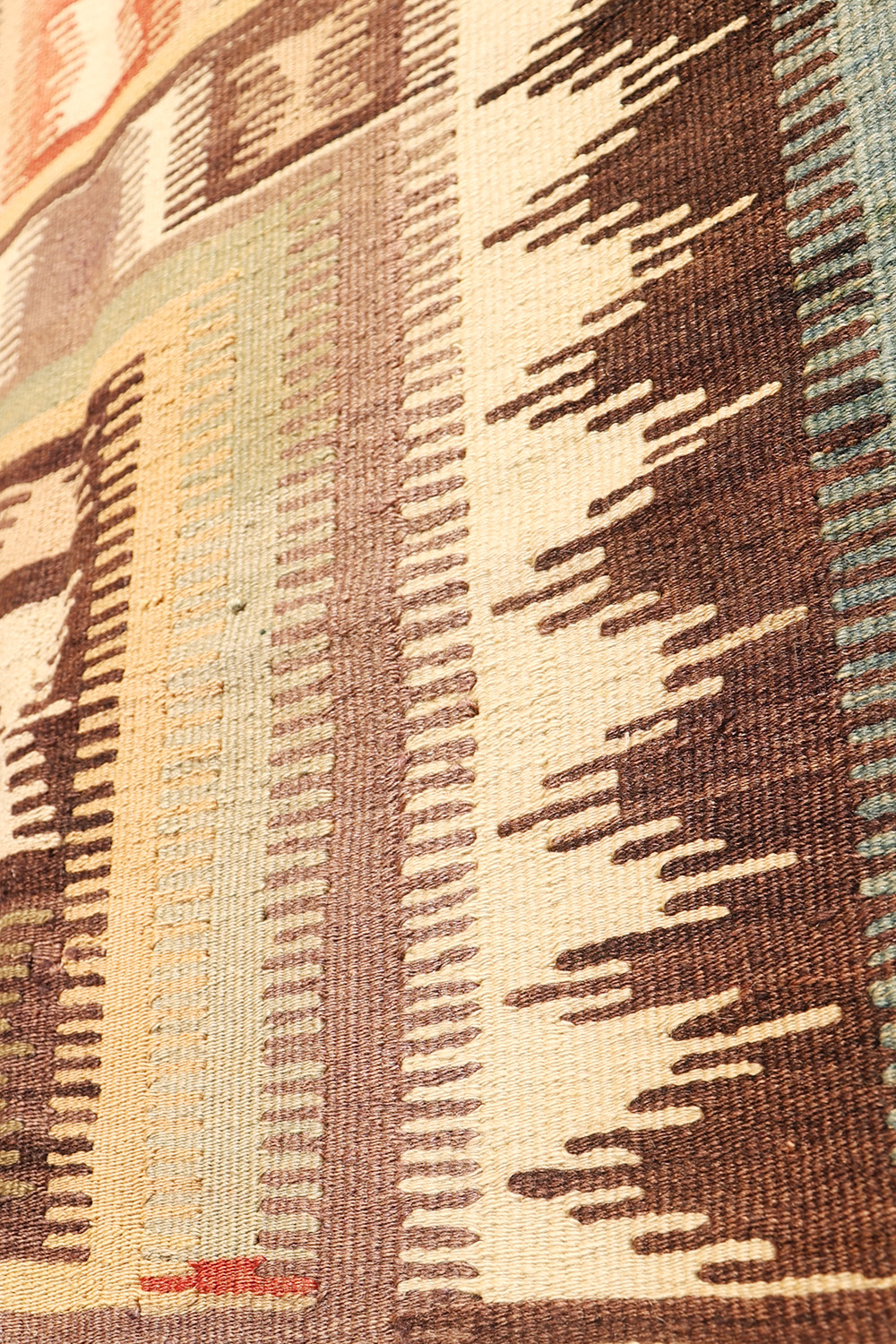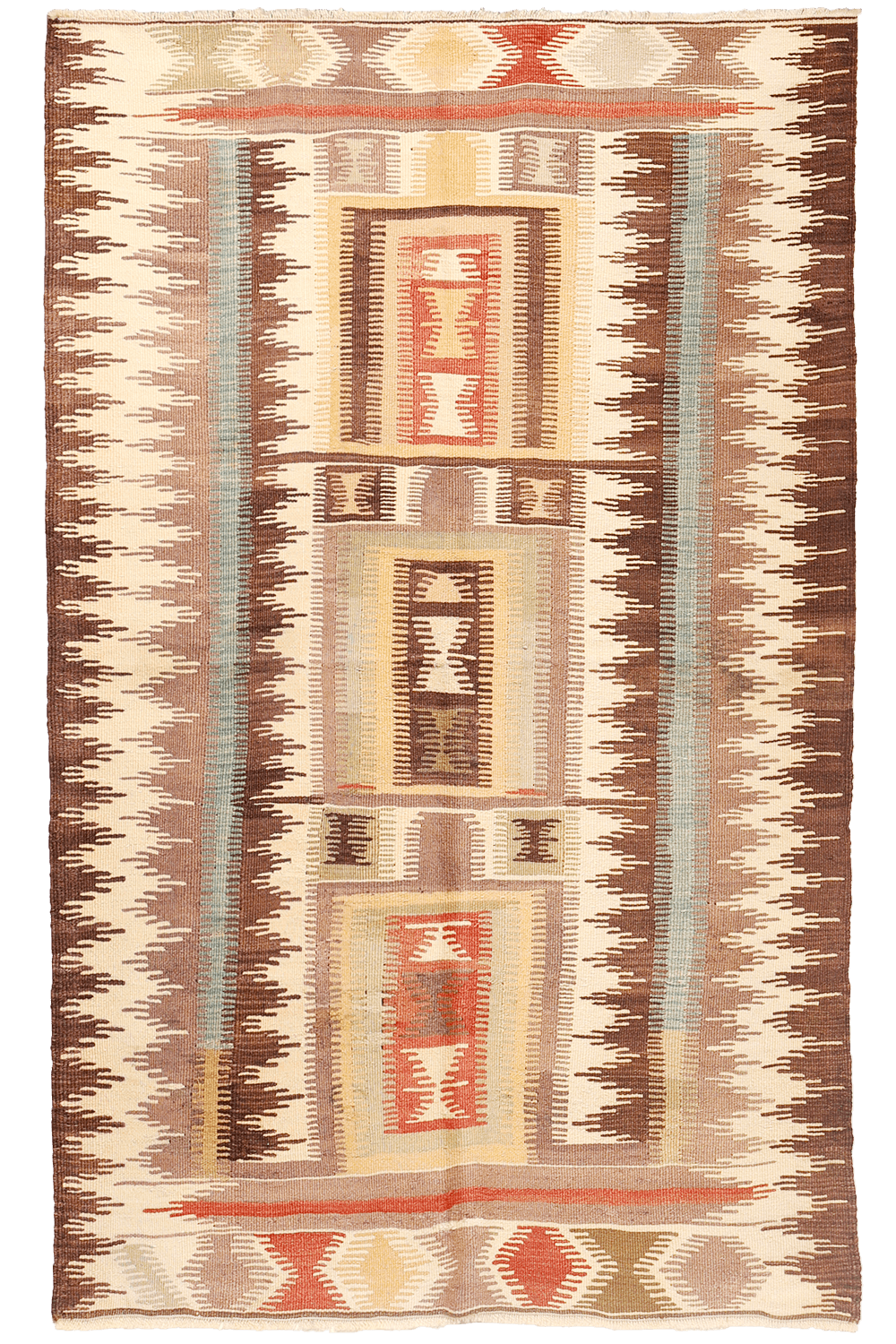1,050.00 €
Striking Antique Karapinar Kilim with multiple prayer niches– Turkey
At first glance, you might think the photo is out of focus—but look closer. The weaver of this exceptional Karapinar kilim has skillfully introduced ultra-fine horizontal lines, creating a unique optical effect that gives the piece an almost shimmering, dynamic quality. It’s a true eye-catcher and a testament to the creativity of Anatolian textile art.
This antique prayer kilim features a beautiful color palette, including pistachio green and aubergine tones. In the blue section, the kilim displays a lovely abrash, or natural color variation.
The kilim also has a couple of old repairs.
Karapinar kilims are known for their finely drawn designs and are often woven in the saf or prayer format, featuring multiple prayer arches side by side. This kilim is a beautiful example, with three central prayer niches forming the main design theme. Unusually, the prayer niches contain “hour glass” motifs framed by rectangular motifs. The border echoes the saf motif in a repeated horizontal pattern that becomes more apparent the longer you look.
Material: 100% hand-spun sheep wool
Size: 170×110 cms
Origin: Karapinar, Konya. Turkey
Date of weaving 1900-20s
Particularly known for saf kilims, Karapinar production mostly features multiple prayer niches in a unidirectional horizontal arrangement. Saf kilims are believed to have many uses, for family prayer, for covering the coffins on their way to burial, and for segregating the women’s section in the mosque. The basic saf design has changed little over the centuries, and is still being woven in the Konya area today. Different compositions retaining the basic saf model also exist, and sometimes the saf motif is used as a border decoration instead of the central emblem. Some Karapinar kilims display the same legged square with central ‘neck’ as Keçimuhsine çiçims; others feature a prayer niche.
The Mihrab
This word refers to the niche in mosques that indicates the direction of the Kaaba, toward which believers must prostrate themselves. This might suggest that the symbol of the same name is an Islamic creation. Adapted to weaving, it characterizes prayer kilims and rugs, which believers lay out on a clean surface, taking care to orient the pointed end of the mihrab toward Mecca. There are also multi-niche prayer kilims, called saf, intended for collective practices.
However, we favor the hypothesis that the mihrab predates Islam and symbolizes the sacred mountain, a concept present in all mythologies. The various representations of the motif would then be progressive adaptations influenced by contact with new cultures.
A Protective Motif with Exorcising Power
Inaccessible peaks have always stirred the imagination with their majesty—and, when volcanic, with their activity.
Identifying the mihrab with the sacred mountain leads us to classify this motif among protective symbols with exorcising power, as well as among those symbolizing fertility. Yet we cannot rule out the possibility that the mihrab is a product of later beliefs, which would give woven textiles bearing this motif a cultic or religious function.
“Symbolique des kilims”, Ahmet Diler
1 in stock
Additional information
| Weight | 3.4 kg |
|---|
Subscribe and receive the lastest news
